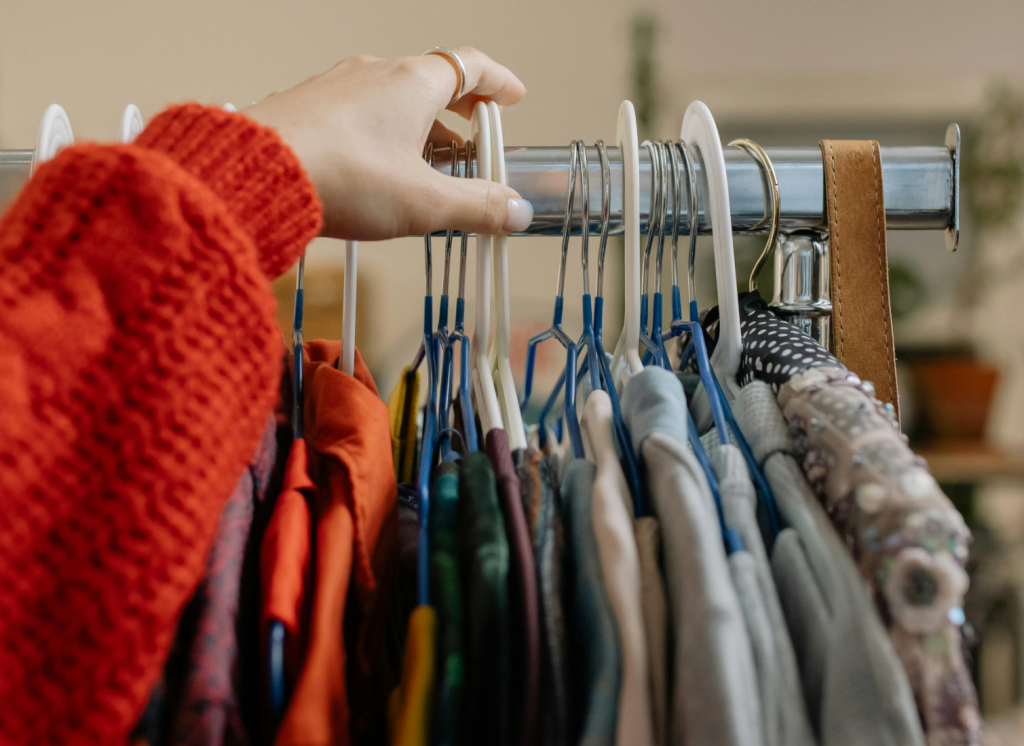
Introduction
The fashion world is split between two powerful forces: fast fashion and secondhand clothing. On one hand, fast fashion promises instant access to trends at wallet-friendly prices. On the other, thrifting champions sustainability, quality, and individuality. But when it comes to actual wear—the comfort, durability, and style that matter in daily life—which side wins? Let’s put both to the ultimate wear test.
The Rise of Fast Fashion
Accessibility and Affordability
Fast fashion brands thrive on their ability to churn out styles that mirror runway trends at lightning speed. They keep prices low, making fashion accessible to almost everyone. Want to look on-trend without breaking the bank? Fast fashion has become the go-to answer.
Style Turnover and Trend Cycles
The downside of affordability is rapid turnover. Collections change weekly, sometimes daily, encouraging shoppers to constantly buy new items. While fun for style experimentation, this cycle often sacrifices durability and long-term wear.
The Growing Appeal of Secondhand
Thrifting as a Lifestyle
Thrifting is no longer just about bargain hunting. It’s become a lifestyle choice, where individuality and sustainability intersect. Shopping secondhand allows you to find pieces with character and history—garments that feel like they’ve lived a story before you.
Sustainability Factor
Secondhand clothing is inherently sustainable. By extending a garment’s lifecycle, thrifting reduces textile waste, cuts demand for new production, and lowers fashion’s environmental impact. For eco-conscious shoppers, this is a major win.
Wear Test Methodology
Comparing Fabric Quality
We compared typical fast fashion fabrics—polyester blends and thin cotton—to thrifted finds, often made from older, sturdier textiles. Immediately, thrifted garments showed denser weaves and richer textures.
Evaluating Stitching and Construction
Fast fashion stitching is typically single-threaded, prone to unraveling with wear. Thrifted clothes, especially vintage pieces, revealed reinforced seams and thoughtful tailoring.
Measuring Longevity in Real-Life Use
A six-month wear test evaluated wash cycles, daily use, and overall resilience. The results highlight striking differences between the two.
Fast Fashion on Trial
Strengths: Accessibility and Style
There’s no denying the appeal of buying a trendy top for under $20. For quick fashion fixes or events where longevity doesn’t matter, fast fashion delivers.
Weaknesses: Durability and Environmental Impact
Unfortunately, many fast fashion pieces began pilling, stretching, or tearing after a few washes. Beyond durability, fast fashion contributes heavily to textile waste and pollution.
Secondhand Clothing on Trial
Strengths: Quality and Uniqueness
Thrifted finds stood the test of time. Sturdy fabrics held shape, and stitching stayed intact. Beyond function, secondhand offers unique styles you won’t find in mainstream stores.
Weaknesses: Availability and Fit Challenges
The downside is inconsistency. Thrifting takes patience—sizes vary, availability is unpredictable, and alterations may be needed to achieve the perfect fit.
Comfort and Everyday Practicality
Fast Fashion Comfort Levels
While lightweight, fast fashion fabrics often lack breathability. Synthetic fibers trap heat, making them less comfortable for long wear.
Thrifted Garments Comfort Levels
Thrifted items—especially those made from cotton, wool, or linen—breathed better and adapted well to daily wear. Comfort improved with natural fibers and well-aged fabrics.
Cost-Per-Wear Analysis
Initial Price vs. Long-Term Value
At first glance, fast fashion wins on price. But when you consider cost-per-wear, thrifted clothing often outperforms. A $10 top that falls apart after 5 wears costs $2 per wear. A $30 thrifted shirt lasting 50 wears costs just $0.60 per wear.
Which Wardrobe Lasts Longer?
Secondhand wins. Well-made thrifted garments endure wash after wash, delivering higher long-term value.
Environmental Considerations
Fast Fashion’s Carbon Footprint
The fast fashion industry produces massive textile waste and emissions, making it one of the top polluting industries worldwide.
Thrifting’s Role in Circular Fashion
Thrifting directly supports circular fashion by giving garments a second life. It delays landfill waste and reduces demand for new resources.
Style and Personal Expression
Fast Fashion Trends
Fast fashion delivers trends instantly, letting shoppers experiment without long-term commitment. Want to try neon green or oversized blazers? Fast fashion makes it easy.
Thrifted One-of-a-Kind Finds
Thrifting offers something fast fashion can’t: individuality. Every find feels like a treasure, allowing wearers to build a wardrobe that stands out.
Social and Cultural Dimensions
Fast Fashion’s Global Influence
Fast fashion brands dominate malls and online platforms, shaping global style norms and making trends universally accessible.
Thrifting Communities and Culture
Thrifting has become a cultural movement. Online resale platforms and thrift communities celebrate creativity, resourcefulness, and sustainability.
Case Study: 6-Month Wear Test
Fast Fashion Results
After 6 months, many fast fashion items showed visible wear—fading colors, stretched collars, and weakened seams. Several pieces were no longer wearable.
Secondhand Results
Thrifted clothes not only survived but thrived. Natural fabrics softened with wear, and durability proved superior, confirming their long-term value.
Pros and Cons Summary
Fast Fashion Takeaways
- Pros: Affordable, trendy, accessible
- Cons: Low durability, environmentally harmful
Secondhand Takeaways
- Pros: High quality, unique, sustainable
- Cons: Sizing challenges, time-consuming to shop
Final Verdict: Which Wardrobe Wins?
When it comes to wear, durability, and long-term value, secondhand clothing takes the crown. Fast fashion offers instant style gratification but struggles to deliver lasting quality. For those who value individuality, sustainability, and true cost efficiency, thrifting proves itself the smarter choice.
Conclusion
Fast fashion and secondhand clothing represent two sides of the style spectrum. Fast fashion wins for quick trends and accessibility, but secondhand dominates when measured by longevity, comfort, and sustainability. In a wear test, thrifted finds clearly outperform, proving that sometimes the old really is better than the new.

FAQs
Q1: Is secondhand clothing really better quality than fast fashion?
Yes—many thrifted garments are older, well-made pieces that last longer.
Q2: What if I don’t have time to thrift?
Online resale platforms offer secondhand shopping with convenience.
Q3: Can secondhand clothing be trendy?
Absolutely. Vintage and thrifted pieces often cycle back into mainstream fashion.
Q4: Is fast fashion ever worth it?
Yes—for quick style experiments or one-off events, fast fashion can be practical.
Q5: How do I maximize value from secondhand clothing?
Look for natural fibers, check stitching, and invest in timeless designs.






